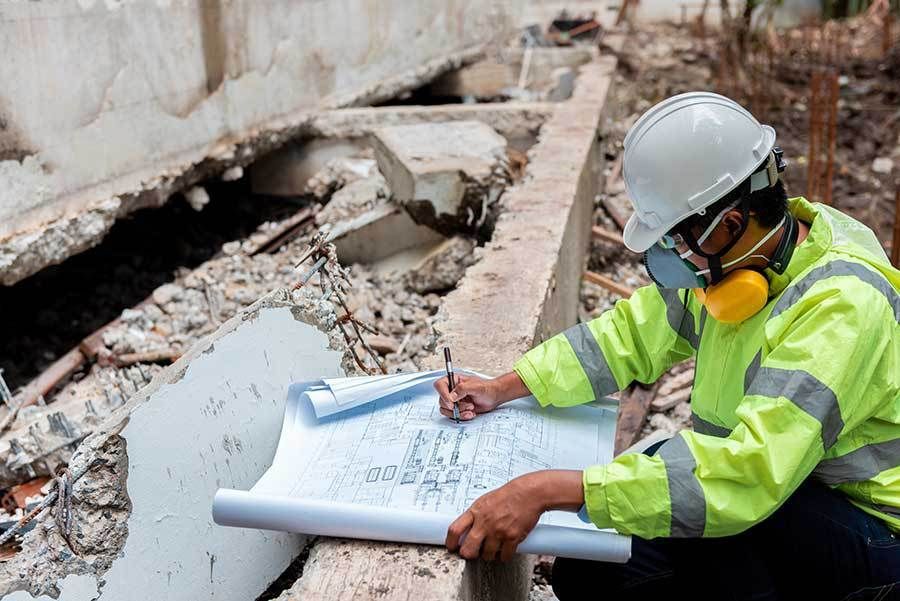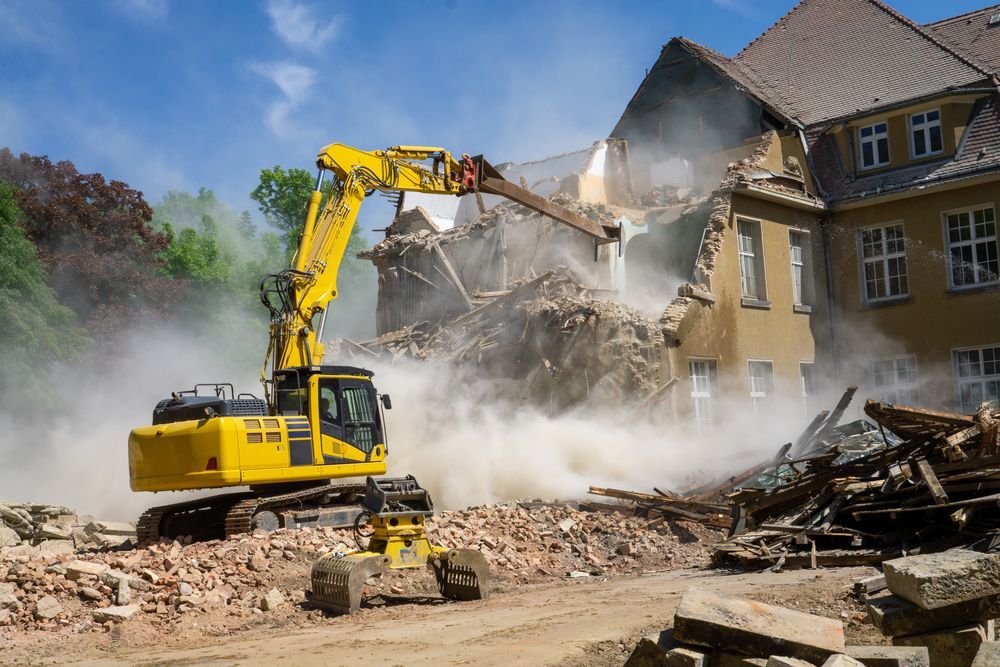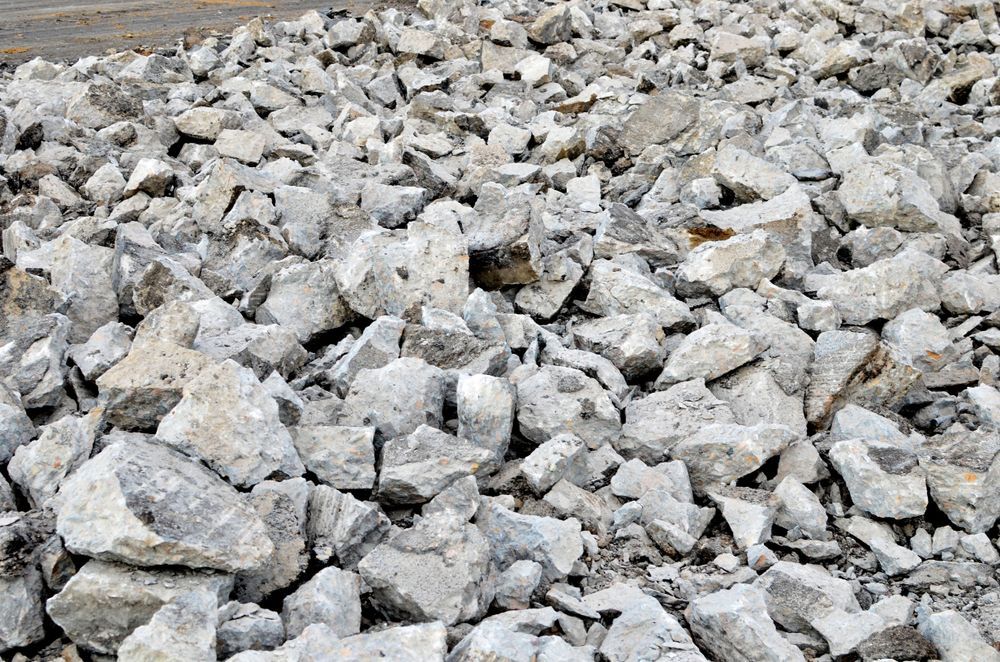Share this article:

There is much more to commercial demolition than preparing and knocking structures down. Depending on the scope of your project, there are several different methods of demolition which can be implemented for best results. From the projects that require a more delicate touch to those that require explosive power, there is a demolition method out there that is best suited for your project. Make sure to follow the correct steps before beginning your demolition. Below, we will examine three of the most common commercial demolition methods, their best suited applications, and how you can get started on your next demo project.
Commercial Demolition By Explosion or Implosion
To begin, we will tackle the most efficient method of demolition, the use of explosives. Because of their ability to bring down multi-story structures quickly and under control, this method of commercial demolition is well known for saving both time and money. However, explosive demolition offers a few other key benefits as well.
With projects involving significant hazards, such as dangerous conditions, tight quarters, or threats to the health of the surrounding communities,
implosions can be the best option for ensuring the safety and health of everyone and everything involved in the demolition process.
Before starting this method of demolition, make sure you are working with a commercial demolition contractor who has both experience and expertise, and that you have all the necessary legal permissions and documents. The last thing you want is to recreate the problems with the smokestack demolition project conducted in early 2020. Most structures, excluding brick and timber ones, can be adapted to this method of demolition.
However, if you need to salvage any of the materials or only want to demolish certain parts of your structure, there may be other demolition methods that better align with your project scope.
See below some of the primary types of demolition methods…
Commercial Demolition By Hand
While definitely the slowest option for demolition that exists, demolition through the use of hand tools can be a fantastic option when you need to be careful. The main goal of by hand demolition is to ensure the majority of the building parts can be recovered for future use. For example, if you need to save LAN cables, electrical wiring, or other important building components, this demolition method will be your best bet.
It should be noted that this method of demolition is accomplished most safely when done floor by floor, starting with the roof and working down. We also usually recommend that the businesses using the
building either temporarily shut down operations, or find temporary office space. While this method of demolition certainly offers unique benefits, it is also the slowest option and can be very costly. What demolition options are available to those who are searching for a more rapid and cost-effective way to tackle their project?
Commercial Demolition By Machine
Mechanical demolition is by and large the most common demolition method available for many commercial projects. Through the use of heavy machines and the latest technology, commercial demolition projects can be handled quickly, efficiently, and cost effectively.
Much of this
equipment requires a great deal of skill and
experienced professionals should be the only ones to operate said equipment. These are not tools to try to learn in a weekend. For example, hydraulic excavators, cranes, and even wrecking balls are all common demolition machines that demolish entire buildings over short periods of time and cause many potential hazards if used inappropriately.
While uncontrolled or unintentional building collapses are a worst-case scenario, other factors such as excessive dust, flying debris, and noise can all cause serious damage to surrounding structures or workers. Be sure to have all the proper documents and a professional debris removal service in place before beginning your demolition project, and many of these hazards will not be a problem.
Additional considerations for any type of commercial demolition project include:
- Disconnecting every service to your building before the project begins
- Implementing proper care and safety procedures when hazardous or radioactive materials are found
- Ensuring you have access to all the equipment, manpower, and other resources you need.
If your demolition project requires you to stay under budget and on a tight schedule, mechanical demolition will likely be the best course of action to take.
Handling Commercial Demolition with Alpine Demolition Services
At
Alpine Demolition Services, we understand how important it is to finish your demolition projects on budget and on time. That’s why we will work with you and your team to accomplish this goal by choosing the best method for your specific project. When you work with Alpine Demolition you can be assured that you are working with a commercial demolition expert who dedicates the resources and has the understanding to complete the job in a safe, efficient, and sustainable way.
If you would like to discuss your next project with our team, please do not hesitate to call us at (630) 761-0700 or
contact us online. No matter your project or method, we look forward to helping you knock it down.



